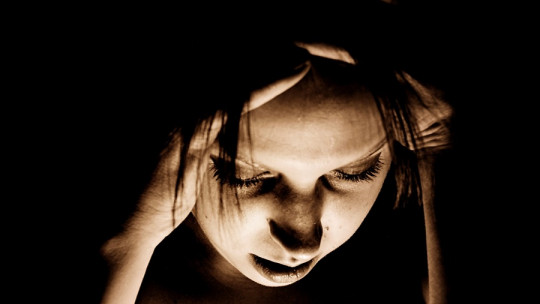
Both the act of vomiting and the vomiting itself are not one of the most pleasant experiences that a person can go through since they are also usually associated with other discomforts or pains. However, it is a natural act that our body performs when it believes it must eliminate the agent that causes the discomfort, so it does not always lead to any pathology or disease.
However, there are a small number of people who experience an absolute and intense fear of everything related to vomiting. This is known as emetophobia, a type of specific phobia which we will talk about throughout this article.
What is emetophobia?
Emetophobia is a psychological condition categorized within specific anxiety disorders. Like the rest of specific phobias, it is distinguished because the person who suffers from it experiences a deep fear of a specific object, person or situation.
In the specific case of emetophobia, this Exacerbated fear occurs when faced with any stimulus related to vomiting Although anyone can express feelings of aversion towards it, in emetophobia the person experiences a deep feeling of fear, which is also irrational, uncontrollable and remains over time.
The situations that can provoke this anxiety response in the person range from the act of vomiting, both one’s own and seeing others vomit, as well as the feeling of nausea that precedes vomiting or the vomiting itself.
It is estimated that approximately 5% of the world’s population suffers from this exaggerated fear of vomiting and the behavior of vomiting, appearing with almost the same incidence in people of different ages and sexes, with cases having been recorded both in childhood, adolescence and in adulthood. adulthood.
Some of the characteristics that most people with emetophobia share include anxious personality characteristics and that they tend to increase their level of tension and nervousness whenever they are in places such as health centers or with sick people, since they are faced with the possibility of see someone vomit.
In the same way, these people tend to alter their eating habits consuming only foods that they are safe from vomiting On certain occasions, this behavior can become so serious that it usually leads to eating disorders such as anorexia.
The reason is that the person restricts the amount of daily food or refuses to eat for fear of vomiting. This appears along with the feeling of anxiety that emetophobia causes every time they go to eat, which turns this act into constant torment and suffering.
What symptoms does this phobia of fear of vomiting present?
Since emetophobia is within the classification of phobias or specific anxiety disorders, its clinical picture presents in a similar way to the rest. The symptoms included in this diagnosis They can be divided into physical symptoms, cognitive symptoms and behavioral symptoms
These symptoms can appear both due to the presence of the phobic stimulus, as well as due to the mere imagination or mental representation of it. As a consequence, the following symptoms may appear in emetophobia, ordered according to the previous categories:
1. Physical symptoms
As a consequence of the appearance of the phobic stimulus, in this case any stimulus related to vomiting, hyperactivation of the nervous system occurs The product of this increase in functioning is all kinds of alterations and changes in the body.
Among the many physical symptoms that the person may experience include:
2. Cognitive symptoms
In the company of physical symptoms, emetophobia is also distinguished by the presence of a whole repertoire of cognitive symptoms, including thoughts, beliefs and imaginations about possible danger or harm that vomiting or the act of vomiting can cause.
The development of these deformed ideas and beliefs appear in an irrational and uncontrollable way, driving the advancement of this phobia. Added to these ideas are a series of mental images of a catastrophic nature that flood the person’s mind.
3. Behavioral symptoms
Finally, the effect of cognitive symptoms is reflected in the appearance of a series of behavioral symptoms. In this case, the symptoms related to the person’s behavior manifest through avoidance behaviors and escape behaviors
Avoidance behaviors are all those behaviors that the person carries out with the aim of avoiding the phobic stimulus. In this case, the individual may refuse to eat, eat excessively slowly or only select foods, or refuse to go somewhere where he can witness something related to vomiting.
As for escape behaviors, these appear when the person has not been able to avoid encountering any event related to vomiting, so they will carry out all types of behaviors that allow them to escape from the situation as soon as possible.
What are the causes?
Although trying to discover the specific origin of a phobia is quite a complicated task, in the case of emetophobia a large number of patients report experiencing very unpleasant or dramatic situations in which vomiting or the act of vomiting appeared in a different way. form or another.
However, there are many other cases in which the person is not able to associate this fear with any traumatic experience so it is hypothesized that there are other factors that can play an important role in the development and appearance of a phobia, such as a genetic predisposition or learning by imitation.
Is there a treatment?
In those cases in which the phobia can become highly annoying or even dangerous, the patient can resort to psychological intervention, which can help reduce the intensity of symptoms to the point of making them disappear
Although there are many psychological interventions and therapies that, carried out by a psychology professional, can be effective. Cognitive-behavioral therapy is the one that reports the best and fastest results.
This type of therapy usually includes three different and complementary types of actions. On the one hand we find cognitive restructuring, thanks to which the person manages to modify their thoughts and distorted beliefs.
In addition, in vivo exposure techniques or systematic desensitization are used by which the person gradually faces the phobic stimulus either live or using your imagination.
Finally, this is accompanied by training in relaxation skills that reduces the levels of excitation of the nervous system and helps the person face the feared situation or object.








